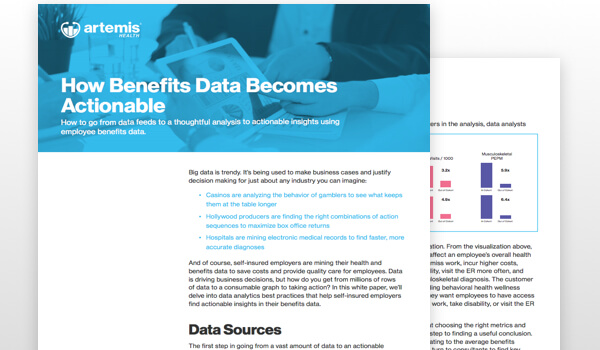
Want to learn more about how data can help?
Learn how benefits data becomes actionable with Artemis.
Download the WhitepaperThese same cat qualities can be frustrating in your employee population. When it’s time for a new wellness initiative or open enrollment, employees who act like cats somehow aren’t as charming. That’s why boosting employee engagement is so tough and can leave you feeling like a professional cat wrangler.
We talk to many benefits teams, and we hear the same theme cropping up when it comes to engagement. It’s so difficult because:
Think back to when you weren’t yet a benefits expert. Could you spout off the difference between HMOs, PPOs and HDHPs? No? Benefits are confusing for members, and they don’t deal with these acronyms every day like you do. No wonder they aren’t engaging the way you’d like.
If you’re like most self-insured employers, you have workers in multiple offices with different roles and communications needs. You could have the most effective benefits plan design in the country, but if your messaging isn’t reaching the right members, you won’t get the engagement you need.
So let’s approach employee engagement the way a professional cat herder might do it. In order to influence a cat, you must think like one.
This classic advertising strategy is a perfect fit for encouraging employee engagement. Whether it’s a month-long steps challenge or a biometrics screening, phrase your communications around what matters to the employee. Instead of describing the initiative, describe what your employee will get out of it, whether it’s a trimmer waistline, a snapshot of their health, or the satisfaction of saving for their future health expenses.
While some employees pour over their benefits elections, others will just pick a plan quickly without doing much research. This requires two “cat herding” communications methods:
1. Providing a full, detailed plan overview
2. Distilling the options into quick, easy-to-understand info
Smart employers will create communications that meet the needs of both types of employees and lets them engage with benefits materials at the level they choose. This is especially important as plan types evolve.
For example, some employees might see the deductible on an HDHP plan and think it doesn’t offer good coverage. But those who do the math may find an HDHP is a better deal for how they use their health coverage. Giving employees the details and explanations they need can increase engagement and understanding.
No two cats are the same. Some might greet you at the door with loud meowing, while others might hide and only come out when they hear the tell-tale sound of the can opener. The same goes for employees. They have different needs, different motivators, and different communication styles. You might reach office workers through email, but you’re better off sending mailers to those who travel frequently or work in warehouse roles.
The same logic goes for different types of programs. Employees who have young children are much more likely to contribute to an HSA compared to millennials just entering the workforce. And studies show that healthy, active employees are the ones taking part in your wellness initiatives. Those who do participate do so for a few key reasons. A SHRM survey showed that the top three reasons employees chose to engage are to:
1. Improve their health
2. Maintain their health
3. Learn about their health risks
Those who didn’t engage either felt they could improve their health on their own, or they cited a lack of free time to participate. Smart benefits teams use these common motivators to plan communications, reach different audiences, and tailor messaging to those who otherwise wouldn’t engage.
Do you have a cat who will come when called by one family member, but completely ignores another? Yeah, we thought so. Just as it takes a team of experienced wranglers to herd cats, it takes a team of experienced benefits pros to boost employee engagement. Employees find it easy to ignore all staff emails, but are more likely to open and read communications from their health plan or your organization’s broker.
Tap these pros for help in planning, delivering, and measuring the success of your messaging. They can help you craft custom communications and deliver them in the right channel to get your employees’ attention. Consultants and brokers can also help you plan ahead with a communications calendar to send pertinent info on a regular basis, reminding employees throughout the year about the benefits programs that matter to them.
Employee engagement is tricky, and it can be as overwhelming as herding cats. Benefits teams can make a difference by following these tips, getting tactical about communications, and seeking expert help. Data is key, too: with access to trends, insights, and real-time analysis, you can better plan, target and create communications that appeal to members.

Learn how benefits data becomes actionable with Artemis.
Download the Whitepaper